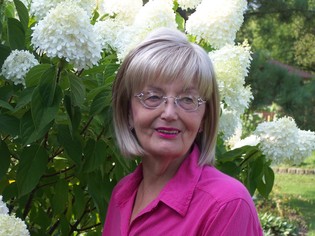Extreme couponers have nothing on me.
They may have their own television show and purchase $200 worth of groceries for $2, but I grow much of my family’s food for pennies. Plus, for no money, my yard is full of stunning flowers and a landscape that stops traffic.
After living through two deep recessions in the 1980’s, I became the ultimate extreme gardener. You can, too, in these times of financial turmoil. It’s easy to turn garbage into fertilizer, recycle yard refuse and reuse found items in the garden.
Big Money Savers
Compost your kitchen and yard waste for nutrients that make every plant thrive organically. Fertilizer is pricey, because it’s usually made from petroleum and synthetic chemical compounds. Organic fertilizers are a combination of kelp, fish and cotton meals, which are even more expensive. Simply layer fresh green waste with brown matter such as straw, dried lawn clippings and dead vegetation. Don’t use grass clippings from turf that has herbicides applied to it. Clippings retain herbicides for up to two years that kill plants. See this video on how to compost.

I have a composter at my kitchen back door so I can easily dump kitchen scraps, even when there's a foot of snow on the ground.
Autumn leaves are the best mulch and are free. After you rake them up into piles, run the lawn mower over them to shred the leaves. Apply to all beds, especially ones in the vegetable garden. Mulch shrubs and fruit bushes, too. A six-to-eight-inch layer is optimal. Not only do you have free mulch that looks good, but it decomposes slowly, adding nutrients to the soil. If you don’t have enough fallen leaves, ask neighbors for theirs. Grass clippings are also excellent mulch, breaking down like leaves do. Again, avoid clippings from turf treated with herbicides. See more about mulch and low-maintenance landscaping.

Gorgeous fall foliage is a pot of gold for gardeners.
Fireplace ashes are free fruit tree fertilizer. The potash in wood ash is used by trees for fruit production. Scatter ashes around the root zone area of each tree, and then add mulch. Blackberries, raspberries and grapes also benefit from ash applications. If you burn paper in the fireplace, avoid using ash from colored, slick paper and colored newsprint. Color inks contain heavy metals that could end up in the fruit.
Household garbage is free food for roses, rhododendrons, azaleas and acid-soil-loving perennials. Bury over-ripe bananas and their skins at the base of plants. Scratch into surrounding the soil coffee grounds and tea bags. Bananas are powerhouses of calcium, magnesium and phosphorus, elements flowering plants crave. Coffee and tea acidify soil, promoting the uptake of more nutrients by plant roots.
Three Freebies
Let annual flowers, vegetables and herbs drop their seeds in beds. Next spring, they will sprout and grow into sturdy plants. Most will come true to variety, but hybrids won’t. You may find an interesting tomato, pumpkin or petunia in your garden!

When the first freeze comes, I let the marigolds dry up and drop their seeds. I open the peppers and spread their seeds, too. They'll sprout next spring and grow into free plants!
Hang those CD’s and DVD’s you get in the mail and ones you no longer use on fruit trees. The laser-etched surface on the disks projects prisms of sharp light that move constantly, spooking birds and squirrels that want to feast on ripening fruit.
Make instant pea fencing by gathering large twigs and small branches pruned from shrubs and trees. Big twigs make great plant props for gladiolas, iris and lilies, too.















